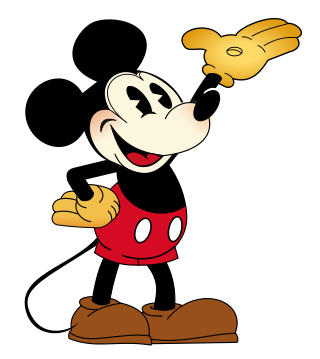
Mickey Mouse is an American cartoon character co-created in 1928 by Walt Disney and Ub Iwerks. The longtime icon and mascot of the Walt Disney Company, Mickey is an anthropomorphic mouse who typically wears red shorts, large shoes, and white gloves.

Song of the South is a 1946 American live-action/animated musical drama film directed by Harve Foster and Wilfred Jackson; produced by Walt Disney and released by RKO Radio Pictures. It is based on the Uncle Remus stories as adapted by Joel Chandler Harris, and stars James Baskett as Uncle Remus in his final film role. The film takes place in the U.S. state of Georgia during the Reconstruction era, a period of American history after the end of the American Civil War and the abolition of slavery. The story follows seven-year-old Johnny who is visiting his grandmother's plantation for an extended stay. Johnny befriends Uncle Remus, an elderly worker on the plantation, and takes joy in hearing his tales about the adventures of Br'er Rabbit, Br'er Fox, and Br'er Bear. Johnny learns from the stories how to cope with the challenges he is experiencing while living on the plantation.

Oswald the Lucky Rabbit is an animated cartoon character created in 1927 by Walt Disney and Ub Iwerks for Universal Pictures. He starred in several animated short films released to theaters from 1927 to 1938. Twenty-seven animated Oswald shorts were produced at the Walt Disney Studio. After Universal took control of Oswald's character in 1928, Disney created a new character similar in appearance to Oswald as a replacement: Mickey Mouse, who went on to become one of the most famous cartoon characters in the world.

Gasoline Alley is a comic strip created by Frank King and distributed by Tribune Content Agency. It centers on the lives of patriarch Walt Wallet, his family, and residents in the town of Gasoline Alley, with storylines reflecting traditional American values.
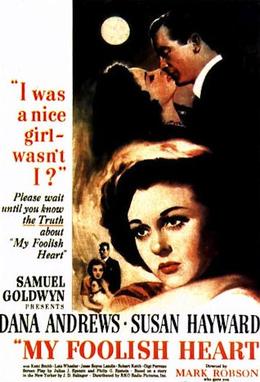
My Foolish Heart is a 1949 American romantic drama film directed by Mark Robson, starring Dana Andrews and Susan Hayward. It relates the story of a woman's reflections on the bad turns her life has taken.

Nine Stories (1953) is a collection of short stories by American fiction writer J. D. Salinger published in April 1953. It includes two of his most famous short stories, "A Perfect Day for Bananafish" and "For Esmé – with Love and Squalor"..

Uncle Remus is the fictional title character and narrator of a collection of African American folktales compiled and adapted by Joel Chandler Harris and published in book form in 1881. Harris was a journalist in post–Reconstruction era Atlanta, and he produced seven Uncle Remus books. He did so by introducing tales that he had heard and framing them in the plantation context. He wrote his stories in a dialect which was his interpretation of the Deep South African-American language of the time. For these framing and stylistic choices, Harris's collection has garnered controversy since its publication. Many of these stories are believed to have Creek Indian influence too.

Howard Roger Garis was an American author, best known for a series of books that featured the character of Uncle Wiggily Longears, an engaging elderly rabbit. Many of his books were illustrated by Lansing Campbell. Garis and his wife, Lilian Garis, were possibly the most prolific children's authors of the early 20th century.
The Glass family is a fictional family appearing in several of J. D. Salinger's short fictions. All but one of the Glass family stories were first published in The New Yorker. They appear in the short story collections Nine Stories, Raise High the Roof Beam, Carpenters and Seymour: An Introduction and Franny and Zooey.

Adventures in Wonderland is a 1992–1995 American live-action/puppet musical television series based on the novels Alice's Adventures in Wonderland (1865) and Through the Looking-Glass (1871) by Lewis Carroll as well as the 1951 animated film. In the series, Alice, is portrayed as a girl who can come and go from Wonderland simply by walking through her mirror.
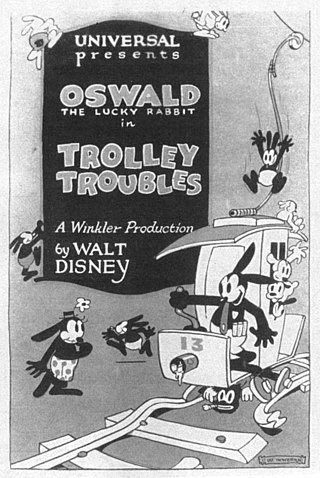
Trolley Troubles is a 1927 animated short subject film, produced by Charles Mintz and George Winkler and directed by Walt Disney. The cartoon is the first appearance of Oswald the Lucky Rabbit, a character that Disney and Ub Iwerks created for Universal Pictures and Charles B. Mintz.
"Uncle Wiggily in Connecticut" is a short story by J. D. Salinger, which appears in his collection Nine Stories. It was originally published in the March 20, 1948 issue of The New Yorker.
Richard Arnold Moores was an American cartoonist whose best known work was the comic strip Gasoline Alley, which he worked on for nearly three decades.

The Mad Doctor is a Mickey Mouse cartoon released in 1933. It is known as the first appearance of the title character "The Mad Doctor", or "Dr. XXX". It was the 52nd Mickey Mouse short film, and the second of that year.
Hilary Knight is an American writer and artist. He is the illustrator of more than 50 books and the author of nine books. He is best known as the illustrator and co-creator of Kay Thompson's Eloise (1955) and others in the Eloise series.

Br'er Rabbit is a central figure in an oral tradition passed down by African-Americans of the Southern United States and African descendants in the Caribbean, notably Afro-Bahamians and Turks and Caicos Islanders. He is a trickster who succeeds by his wits rather than by brawn, provoking authority figures and bending social mores as he sees fit. Popular adaptations of the character, originally recorded by Joel Chandler Harris in the 19th century, include Walt Disney Productions' Song of the South in 1946.
An uncle is usually defined as a male relative who is a sibling of a parent or married to a sibling of a parent, as well as the parent of the cousins. Uncles who are related by birth are second-degree relatives. The female counterpart of an uncle is an aunt, and the reciprocal relationship is that of a nephew or niece. The word comes from Latin: avunculus, the diminutive of avus (grandfather), and is a family relationship within an extended or immediate family. The gender-neutral term pibling, a shortened form of parent's sibling, may refer to either an aunt or an uncle.
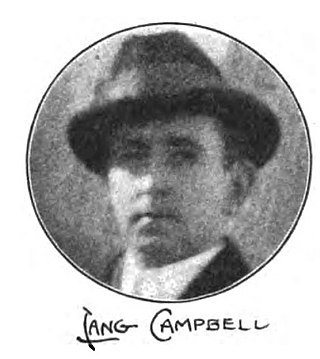
Lansing Campbell (1882–1937) was an American illustrator best known for his illustrations in the Uncle Wiggily series of books by Howard R. Garis. He also used the signature Lang Campbell. Lansing Campbell was an American illustrator of popular children's books. Campbell was born on March 3, 1882, in Carbondale, Jackson County, Illinois to John Gaines Campbell and Alice Beman.
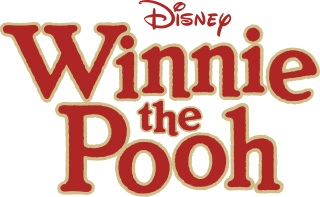
Winnie the Pooh is a media franchise produced by The Walt Disney Company, based on A. A. Milne and E. H. Shepard's stories featuring Winnie-the-Pooh. It started in 1966 with the theatrical release of the short Winnie the Pooh and the Honey Tree.
Uncle Remus and His Tales of Br'er Rabbit is an American Disney comic strip that ran on Sundays from October 14, 1945, to December 31, 1972. It first appeared as a topper strip for the Mickey Mouse Sunday page, but after the first few years, almost always appeared on its own. The strip replaced the 1932-1945 Silly Symphony strip, which had spent its final year on gag strips featuring Panchito from The Three Caballeros.














